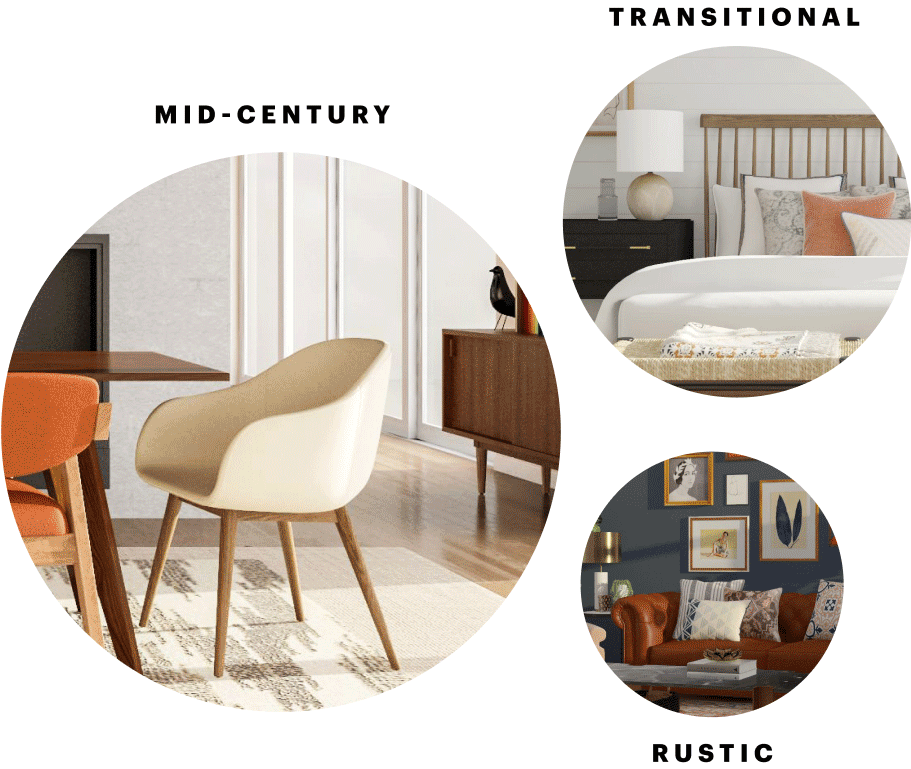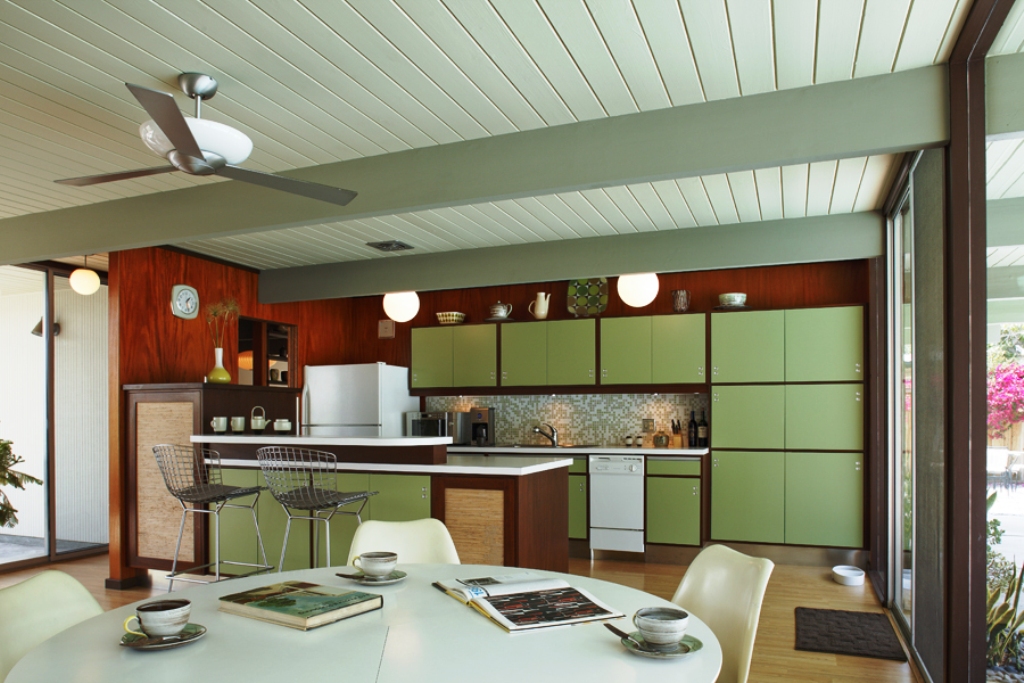Table Of Content

Welcome to our main interior design styles where you get a bird’s eye view of the different interior design styles. A traditional home usually has pieces of old world art found by homeowners with an interesting story behind them that can make for some great conversations. Imagine the kind of character a chandelier and rug picked from flea markets in rural Europe that have a history of over 150 years can add to a home! With vibrancy and symmetry being the central theme of the traditional style, rich textiles and colors are used extensively.
A Brief Roundup of Popular Interior Design Styles
Sometimes, just knowing which stores you’re drawn to can help you define your style, and one of my favorite ways to narrow down my decorating style is to look at home decor catalogs or websites. Experiment with rearranging your furniture, changing wall colors, or adding new accessories to create different looks in your space. Your existing furniture, artwork, and accessories can also provide valuable clues about your design style. "The use of low-VOC (volatile organic compounds) and natural paints contributes to better indoor air quality and is less harmful to the environment compared to traditional paints," says Glaister. Materials that contain a high volume of VOCs are detrimental to the environment, and they’re commonly found in all types of household products, making them harder to avoid than one might think. Natural paints and those with low-VOC content are slowly but surely becoming the norm.
Contemporary
These designs are believed to be a break-free from traditional design conventions that have taken a direct plunge into the modern era. I had the privilege to do a driving tour of midcentury homes in Palm Springs and even managed to check out some open houses of a few midcentury homes. When you think of Bauhaus-style furniture, the first things that probably come to mind are sundry armchairs made of tubular steel and black leather. In many homes, wooden beams and bricks—a helpful foundation for this look—are just waiting to be discovered, so it could be worth exploring what layers you can peel back. Opt for furniture that has some history, maybe those with small blemishes or a vintage look.
Mid-Century Modern Interior Design Style
As you can see, each style has its unique charm and aesthetic that you can use to bring your vision to fruition. Whether you choose to go with one style or use elements of different ones to create your own, you have a lot of choices. Interior design isn’t just about creating visually appealing spaces. Striking a balance between form and function is the key to good design. This philosophy suggests a space should be designed for its intended use, with aesthetic elements enhancing its functionality. With roots tracing back to 1920s Europe, Art Deco prioritizes geometric forms and intricate decoration paired with luxe materials like lacquer, mirrored glass, and marble.
A top 10 interior design style.
The German bauhaus style was born out of a concept to blend functional, yet beautiful, furniture that could be mass produced. Wassily chairs, bauhaus lamps, nesting tables and Walter Gropius’s armchair (see above) are all classic examples of this blocky but beautiful style. Applying these principles can create a visually pleasing and well-designed interior space. Since minimalism often means doing more with less, you'll often notice the importance of light and contrast in minimalist spaces, like this one by Robson Rak. It’s soft, layered, and ambient, creating a warm and inviting atmosphere. Think a singular sculpture or a tastefully framed artwork rather than walls filled with pieces.
Most of the furnishings used by these designers appear to be distressed and aged and contain a very antique kind of a finish. The aim of this type of interior designing is often to blend together features of contemporary and modern styles with a scruff and ragged finish. Modern interior designers are also described as super “sleek” since they have an unparalleled love for simple palettes and designs that are often coupled with clean, crisp angles, and lines.
Lulu and Georgia and Anthropologie are great sources of inspiration for boho and eclectic decor. Often, there’s a little something, a detail or a twist, that resonates with you and feels interesting, such as a piece of artwork or the curve of a chair. I know I’m happiest when I decorate in a way that expresses my own taste and style, so creating a style vignette is a good way to keep me from getting off track. Whenever I find myself getting distracted by all the styles out there, I think about our entryway. It reminds me of the overall mood, tone, and style I want to convey in our home. You might even want to gather those things together in one area of your home and create a vignette or arrangement of objects that tells a story about how you want your home to look and feel.
Bamboo, snake grass, rocks, pebbles, and a water feature are organic and will help you relax. French country style homes offer hipped roofs, asymmetrical curb appeal, and stucco. Others are known as A-frame cabins, as their gable roof is extremely steep and looks like an "A." In addition to stunning curb appeal, the A-frame style of roof also offers an efficient way to discard heavy snow. Industrial style is one you're probably pretty familiar with by now. Inspired by the lofty factories of the late 19th and early 20th centuries, it's a design aesthetic that considers function first, then form.
The British Invasion of U.S. Interior Design - Mansion Global
The British Invasion of U.S. Interior Design.
Posted: Mon, 15 Apr 2024 07:00:00 GMT [source]
8 Most Popular Interior Design Styles You Should Know - Family Handyman
8 Most Popular Interior Design Styles You Should Know.
Posted: Fri, 02 Feb 2024 08:00:00 GMT [source]
Next, we have a classic that seems to stay relevant no matter the decade. Mid-century interiors started in the 1950s and ’60s in post-war America. During this time the design industry was trying to break out of its traditional barriers and dive into the modern era. As a testament to this style’s timeless quality, there are still so many popular mid-century modern furniture pieces that are still used in our homes today. Keep an eye out for versions of iconic furniture such as the Eames lounger, the egg chair, or the wishbone chair. We’re here to clear up the difference between modern and contemporary.
Find clever ways to compromise, and your space will end up looking even more interesting and unique for both of you. Click here to add Industrial Interior Design Style to your home decor with Decorilla’s ultimate guide. Here is what you need to know about home renovation costs in 2024. In essence, Japandi isn’t just a trend, it’s a lifestyle shift towards elegance and peace.

If you like this look but tend to fluctuate between styles, Kuo notes that this is one such aesthetic that blends nicely with French country. Accessories are pared back, and colors are neutral, with small colorful pops displayed in accent pieces. There are more open spaces, and as a result, this style can feel more current and serene while blending in classic and timeless elements. Where traditional design tends to be warm and heavy, the transitional design style is light, airy, and more relaxed. Dating back to the 1950s you can think of this style as a middle ground between traditional and modern, with contemporary thrown into the mix. If you're planning a full kitchen remodel, the first thing you'll want to consider is the overall design style.
If maximalism is a direct more-is-more attitude, eclectic design celebrates that more is more—and then tempers that mentality with neutral walls or unobtrusive flooring (under bright rugs, of course). A stark contrast to minimalism, Art Deco is all about showy, not-so-humble interiors. Art Deco, short for Arts Décoratifs, was most popular from the 1920s to 1940s, and was more interested in decorative expression than simplistic function.
French country design, also known as provincial style, is welcoming and casual yet refined and elegant. It draws its inspiration from the French countryside with plenty of European elegance. Faux finishes and ornate curves are part of the charm of this aesthetic. With velvet currently trending, it’s easy to decorate your home or apartment with this glamorous design.

Curtain walls or door panels are common to separate a larger space and give a sense of privacy. The color palette is drawn strictly from nature in order to keep the serene and calm vibes. In addition to metal, glass was another prominent material used in Art Deco interiors. Mirrored surfaces and glass accents added a sense of elegance and reflected the era’s fascination with modernity and technology. Elaborate glass chandeliers and light fixtures became popular focal points in Art Deco spaces.
Whether it’s the gentle patina of weathered furniture or the flickering glow of candlelight, French country interiors have a magical way of evoking a sense of nostalgia and serenity. It’s a design style that captures the essence of a romantic countryside retreat, inviting you to immerse yourself in the welcoming atmosphere. Rust, terracotta, and cactus green, are a few favorites amongst designers. Whereas furniture is more on the heavy side, often adorning thick legs and bulky finishes.

No comments:
Post a Comment